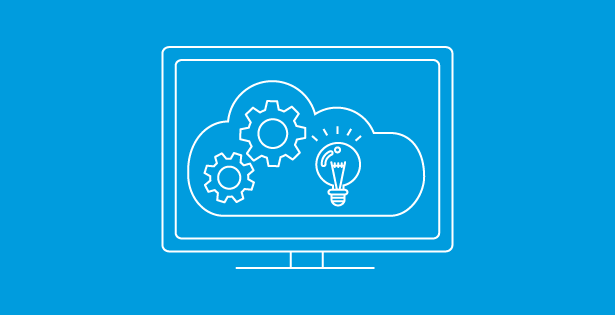Executive Overview
Dreamforce 2025 made one thing clear – Integration has entered its AI era. MuleSoft is no longer just connecting systems and building APIs, it’s becoming the intelligent fabric that connects agents, data, and actions across the enterprise. Salesforce has repositioned MuleSoft at the center of its Agentforce vision, taking it from an API driven middleware into a platform for AI enablement through secure, governed, and composable AI operations.
Introduction
Enterprise integration is undergoing a profound transformation. What was once a backend IT concern is now a strategic business imperative, shaping how organizations deliver digital experiences, automate operations, and harness data across every function.
As AI agents proliferate across the enterprise, the challenge is no longer just connecting systems; it’s orchestrating intelligent interactions between agents, systems, and humans. This shift demands a new kind of integration: one that is contextual, composable, and governed at scale.
MuleSoft, a leader in integration and API management, is redefining this landscape with its AI-powered foundation built for the Agentic Enterprise. Through innovations like Agent Fabric, Agent Broker, Model Context Protocol (MCP), and the MuleSoft “Vibes” Dev Agent, teams can now design, deploy, and manage AI-driven workflows with speed, intelligence, and confidence.
For business leaders, this means:
- Accelerated delivery of digital initiatives
- Increased visibility and governance across autonomous systems
- Enhanced alignment between IT and business outcomes
For developers and architects, it transforms integration from a manual, repetitive task into a smart, collaborative experience. One where every API, workflow, and agent interaction is enriched with context and intelligence.
Direct from Dreamforce, this article introduces MuleSoft’s vision for the Agentic Enterprise, powered by Mulesoft, setting the stage for a deeper technical series. We’ll explore how AI-powered capabilities, from natural language API design to intelligent document processing and agent orchestration, are enabling enterprises to build faster, smarter, and more resilient digital ecosystems.
Why AI Matters for Integration, and the Agentic Shift
Enterprise integration has traditionally been a complex, resource-heavy endeavor. Developers often spend hours writing boilerplate code, managing handoffs, and translating business requirements into technical implementations. Meanwhile, business teams struggle with misalignment, duplicated effort, and slow delivery cycles due to fragmented tools and lost context.
MuleSoft’s AI-powered platform addresses these pain points by transforming integration into a smart, contextual, and collaborative experience ready to embrace the Agentic Enterprise.
Key innovations include:
MuleSoft Intelligent Document Processor
MuleSoft Intelligent Document Processing (IDP) uses AI to extract structured data from unstructured documents like invoices and purchase orders, supporting multimodal large language models for enhanced accuracy. Users can customize schemas, configure prompts, and leverage Salesforce Einstein models to refine data extraction, with human review triggered when confidence scores fall below set thresholds.
MuleSoft Agent Fabric
MuleSoft Agent Fabric is a centralized platform designed to discover, orchestrate, govern, and observe AI agents across ecosystems, enabling enterprises to manage agent complexity and optimize performance. It offers tools like Agent Registry and real-time workflow tracing to ensure secure, scalable, and intelligent agent operations.
MuleSoft Vibes Support for Developers
MuleSoft Vibes is now generally available, offering Anypoint Platform users a secure, AI-powered development agent that enables natural language-based coding, management, and optimization of Mule applications. Designed to elevate productivity and ensure high-quality output, Vibes supports the entire application lifecycle with features like contextual insights, automated code generation, and unmetered access for experimentation.
MuleSoft Agent Broker
MuleSoft Agent Broker enables seamless orchestration of diverse AI agents across platforms, helping teams eliminate redundancy and scale AI securely and efficiently. It supports intelligent agent networks with context-aware routing and collaborative problem-solving to ensure high-quality, business-focused process execution.
MuleSoft Agent Governance
MuleSoft Agent Governance provides enterprise-grade control over AI agent interactions using Flex Gateway, enabling secure, compliant, and performant communication across agent networks. It includes features like schema validation, PII detection, rate limiting, and bidirectional protection to ensure responsible and reliable agent behavior.
MuleSoft Model Context Protocol Support
MuleSoft has launched general availability of Model Context Protocol (MCP) support, allowing organizations to transform APIs and integrations into agent-ready tools that securely connect AI agents to enterprise systems. This enables faster development, richer context, and scalable automation, helping businesses move AI agents from experimentation to production with governance and flexibility.
Mulesoft Agent Visualizer
MuleSoft Agent Visualizer offers a dynamic, real-time map of your enterprise’s AI agent network, revealing relationships, call volumes, governance coverage, and performance bottlenecks. It helps teams monitor usage, assess security, troubleshoot failures, and gain full situational awareness of agent interactions and dependencies.
MuleSoft AI Toolkit: Overview
This technical series serves two audiences, business leaders and developers, connecting strategic vision with technical execution.
For Business & IT Leaders |
For Developers & Architects |
| Understand the strategic value of MuleSoft’s Agentic Platform and how it supports enterprise-wide AI transformation. | Learn how to build, manage, and secure AI-driven integrations using MuleSoft’s new protocols, agents, and tools. |
| Explore how governance, orchestration, and observability help control complexity and risk. | Deep dive into capabilities like A2A Support, Flex Gateway policies, and Anypoint Code Builder (MCP). |
| Discover how to align business goals with IT innovation through a unified, AI-ready foundation. | Get practical, hands-on workflows, architecture examples, and code-level insights. |
Together, they form a single roadmap, helping organizations move confidently from digital transformation to agentic transformation.
Closing
MuleSoft’s announcements are more than an incremental improvement. It represents a fundamental rethinking of how integrations are designed, built, and operated. By aligning priorities such as speed, compliance, and cost reduction with developer-focused capabilities like context preservation, automation, and AI copilots, MuleSoft delivers a platform where IT and business teams can move forward in true sync.
This is just the beginning. In our technical series, we’ll explore each feature in depth, demonstrating how MuleSoft’s AI era empowers developers to deliver integration projects that are faster, smarter, and tightly aligned with business objectives.
This article was written by Jake Broesch in collaboration with Raghvendra Kumar.
 Raghvendra Kumar brings hands-on expertise in MuleSoft development to RSM’s Enterprise Integration & Migration team, where he focuses on building efficient data integration pipelines. He focuses on transforming legacy systems into agile, connected environments by making data flow smarter and faster.
Raghvendra Kumar brings hands-on expertise in MuleSoft development to RSM’s Enterprise Integration & Migration team, where he focuses on building efficient data integration pipelines. He focuses on transforming legacy systems into agile, connected environments by making data flow smarter and faster.

 RSMUS.com
RSMUS.com


